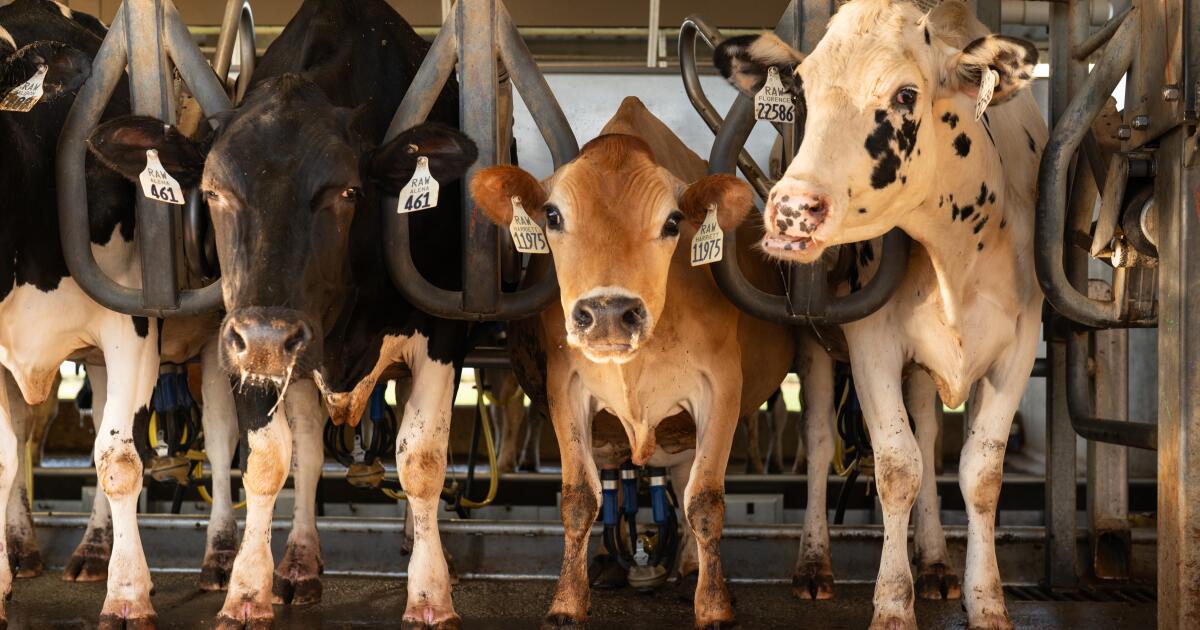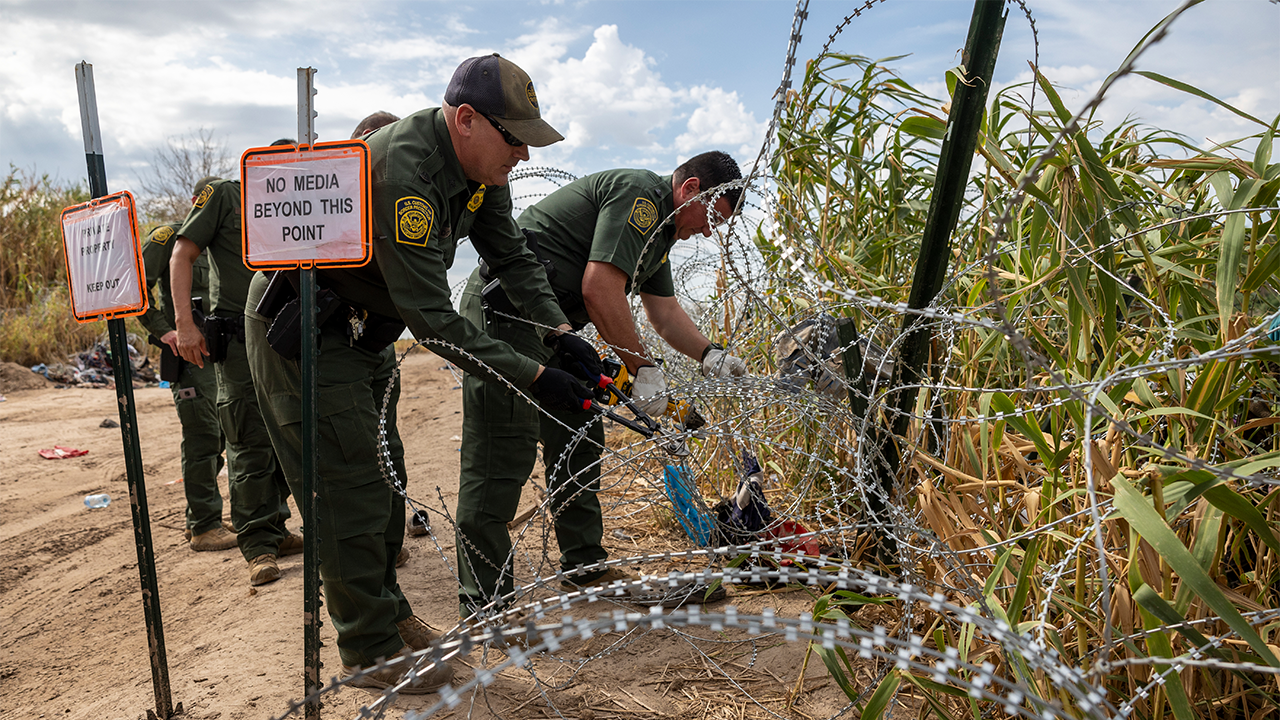Mississippi
Dangerous PFAS chemicals add to Mississippi’s water woes

CORINTH – Crystal and Tim Dotson were spooked after watching “The Devil We Know,” a documentary about how the scarily named “forever chemicals” contaminated public soils and streams for decades.
Curious to know if the chemicals, also called PFAS, were affecting them, the Dotson decided to have their water tested. As they discovered, their water contained PFAs at levels much higher than what public health experts consider safe.
“It was staggering,” Crystal Dotson told Mississippi Today.
The revelation came from a study of Mississippi’s tap water — conducted by Consumer Reports in partnership with Mississippi Spotlight, a collaboration between Mississippi Today and other news partners — that tested samples from 149 connections around the state, including all 82 counties.
For years, PFAS were a staple of manufacturing consumer products because of their resilience to natural factors. In some cases, the chemicals are thought to never break down in the environment. Because of PFAS’ fortitude and widespread use, government studies have estimated that nearly every American has at least some trace of the chemicals in their bloodstream.
The Consumer Reports study echoed that concern: almost all of the samples tested – 98% – revealed some level of PFAS from the volunteers’ tap water. But, much like with other contaminants, there are varying opinions on what amount of PFAS people should be allowed to consume.
The Consumer Reports study also tested for heavy metals, including arsenic, cadmium, mercury and lead. Those results were mostly in line with standards set by the Environmental Protection Agency, which determines the legal level of contaminants allowed in public drinking water. The one exception was a sample in Carroll County, which exceeded the EPA’s action level for lead by 22 percent.
While the Centers for Disease Control and Prevention says more research is needed to know what amount of PFAS is dangerous for humans to consume, studies show high concentrations can lead to reproductive issues, developmental effects, different types of cancer, and a weakened immune system.
The EPA has yet to regulate PFAS’ presence in drinking water, which means there’s no legal limit that local governments have to adhere to. In recent years the agency has put out a wide-range of recommended levels for PFAS consumption. Finally, earlier this year, the EPA began its process of creating a legal standard for the chemicals, proposing a limit of 4 ppt, or parts per trillion, for PFOS and PFOA, two of the more common types of PFAS.
Advocacy groups like the Environmental Working Group are far more wary, arguing that any amount of PFAS can be harmful for people to consume, as the chemicals can accumulate in a person’s body over time.
“We have hundreds and hundreds and hundreds of studies that show the linked health effects, and we know that no level of PFAS in your drinking water (is safe) because it affects the human body at such low levels,” said Tasha Stoiber, a senior scientist at EWG.
Regardless of the standards, most would agree the level of PFAS in the Dotsons’ tap water in Corinth is unsafe. Their sample returned a “total PFAS” level – the sum of over 40 different types of the chemical – of 92 ppt. For reference, the International Bottled Water Association uses a limit of 10 ppt. Their levels for PFOS and PFOA were 11 ppt and 8 ppt, respectively, which are both at least twice the level of what the EPA is looking to enforce.

While it’s nearly impossible to specific health symptoms to water contamination, the Dotsons say they’ve encountered a myriad of concerns since moving to their Corinth home five years ago. Tim has suffered recent bouts with kidney disease, cancer, and high blood pressure, the latter two of which have been linked to PFAS.
The Dotsons and their four kids, who have lived in Corinth for 10 years, drink the tap water through a Brita filter, but standard filters like those can’t fully eliminate PFAS. Crystal and Tim, who both live off government disability payments, said they can’t afford more advanced filtration systems (For reference, both EWG and Consumer Reports have compiled lists of filters aimed at PFAS.).
(Consumer Reports has identified four water filters, including two pitchers and two under-sink models, that can help consumers filter out forever chemicals. EWG also has compiled a list of filters aimed at PFAS.)
While the couple were encouraged by recent settlements in civil litigation against manufacturers like DuPont and 3M, they’re scared of what the water might be doing to their family’s bodies.
“It’s the only water that we have,” Crystal said. “This is our home.”
John Rhodes, the general manager for Corinth’s water department, said he wasn’t aware of high PFAS levels within the city, largely because Mississippi has no testing requirements.
“Unless it’s something that’s regulated, I’m not going to be totally aware of it,” Rhodes said.
The Mississippi State Health Department, which regulates public water quality at the state level, cAfter scientists invented PFAS in the 1930s, manufacturers realized how valuable an ingredient it could be. The chemicals became widely used in tools like firefighting foam in the military, and in an array of consumer products like furniture stain repellents and non-stick cookware.onfirmed that it doesn’t test for PFAS. Liz Sharlot, spokesperson for MSDH, said the state doesn’t test for PFAS “based on past random test results not indicating its presence,” adding that more testing will likely happen in the coming years as federal funding becomes available.
About a decade ago, the EPA tested for PFAS in 80 Mississippi locations. While those results revealed no levels above “minimum reporting requirements,” the minimums were at least five times higher than what the EPA is currently proposing. In other words, those results have no bearing on whether they would’ve met the agency’s new standards.
After scientists invented PFAS in the 1930s, manufacturers realized how valuable an ingredient it could be. The chemicals became widely used in tools like firefighting foam in the military, and in an array of consumer products like furniture stain repellents and non-stick cookware.
But those manufacturers and the Department of Defense eventually learned of the dangers of PFAS to those who go near the chemicals. In 2018, ProPublica reported that both the government and manufacturers were slow to reveal the threat of PFAS to the public.
There’s limited knowledge of how widespread PFAS in Mississippi are. Just about a dozen states, Mississippi not included, are either regulating or proposing limits on PFAS in drinking water.
An EWG map of DOD data shows nine sites in the state where the military used firefighting foam containing PFAS. While the military is phasing out use of PFAS, the data from groundwater samples at those sites shows PFAS levels that, in some cases, were thousands of times higher than the limits the EPA is proposing.
Below are the full results from the Consumer Reports study:
This interactive data visualization was created by Enlighten Designs with support from the Microsoft Journalism Initiative and leveraging Microsoft Power BI and Excel.
As shown above, the samples with the highest levels of PFAS came from Corinth, Vaiden, Hattiesburg, Gulfport, Lexington, and Tchula.
Homeowners with some of the higher levels of PFAS offered a wide range of reactions, from concerned, to confused, to indifferent.
Shawn Harris, a banker in Hattiesburg who also runs the Piney Woods Conservation Group, wrote to the EPA urging it to enforce standards limiting PFAS. But even Harris, whose test results showed a total PFAS level of 9.6 ppt, said it’s puzzling trying to figure out what those numbers mean.
“It’s really hard to follow,” Harris said. “When I first got the results I was like, ‘Oh, dang, I’m good, but not that good.’”
Even though he drinks bottled water, he said he’s looking to get an under-the-sink filter for the tap water he gives his pets.
Other volunteers, though, were less concerned. Alan Wilson sent in a sample from his remote weekend home in Lexington, showing 43.4 ppt of total PFAS, one of the highest results in the study.
“When you think about 43 parts per trillion, that’s not much,” he said, adding that he didn’t know why there would be PFAS contamination given that there aren’t any businesses near the property. “So, no, I guess I don’t get too excited about it. It doesn’t scare me.”
It’s unclear how well or how soon local water utilities will be able to filter out PFAS. Once an EPA rule is finalized, utilities will have three years to come into compliance. Even then, many local systems are worried about the associated costs and having to pass on large rate hikes to customers.

Since learning what was in their tap water, the Dotsons have started drinking from store-bought bottles, costing them about $15 a week. Crystal said they started seeing improvements in Tim’s health within a week of the change. As for what happens next, she said she hopes for more accountability over the release of PFAS into public water sources.
“Somebody should go to jail over it,” Doston said. “They need to dissolve those companies and disperse that money to the people that were hurt.”
This investigation was conducted by Consumer Reports in partnership with Mississippi Spotlight, a collaboration between Mississippi Today, the Clarion Ledger and Mississippi Public Broadcasting.

Mississippi
Thanksgiving on Mississippi Public Broadcasting Think Radio, set to air on Thursday, November 28th

MISSISSIPPI (KTVE/KARD) — For Thanksgiving, on Thursday, November 28, 2024, the Mississippi Public Broadcasting Radio will air a special programming.
Photo courtesy of Mississippi Public Broadcasting
According to officials, “Turkey Confidential” and “Feasting with the Great American Songbook: An Afterglow Thanksgiving Special” will run from 9 a.m. to 1 p.m. Francis Lam will be taking calls and help those in need of Thanksgiving cooking tips for the biggest cooking day of the year.
According to officals, “Feasting with the Great American Songbook: An Afterglow Thanksgiving Special” will explore classic jazz and popular songs about food by singers like Louis Armstrong, Louis Jordan, and Fats Waller, perfect for listening while sitting at the table.
Mississippi
Southeast Mississippi Christmas Parades 2024 | WKRG.com

MISSISSIPPI (WKRG) — It’s beginning to look a lot like Christmas on the Gulf Coast and that means Santa Claus will be heading to town for multiple parades around the area.
WKRG has compiled a list of Christmas parades coming to Southeast Mississippi.
Christmas on the Water — Biloxi
- Dec. 7
- 6 p.m.
- Begins at Biloxi Lighthouse and will go past the Golden Nugget
Lucedale Christmas Parade
Mississippi
‘A Magical Mississippi Christmas’ lights up the Mississippi Aquarium

GULFPORT, Miss. (WLOX) – The Mississippi Aquarium in Gulfport is spreading holiday cheer with a new event, ‘’A Magical Mississippi Christmas.’
The aquarium held a preview Tuesday night.
‘A Magical Mississippi Christmas’ includes a special dolphin presentation, diving elves, and photos with Santa.
The event also includes “A Penguin’s Christmas Wish,” which is a projection map show that follows a penguin through Christmas adventures across Mississippi.
“It’s a really fun event and it’s the first time we really opened up the aquarium at night for the general public, so it’s a chance to come in and see what it’s like in the evening because it’s really spectacular and really beautiful,” said Kurt Allen, Mississippi Aquarium President and CEO.
‘A Magical Mississippi Christmas’ runs from November 29 to December 31.
It will not be open on December 11th, December 24th, and December 25th.
Tickets can be purchased online or at the gate.
The event is made possible by the city of Gulfport and Coca-Cola Bottling Company.
See a spelling or grammar error in this story? Report it to our team HERE.
Copyright 2024 WLOX. All rights reserved.
-

 Science1 week ago
Science1 week agoTrump nominates Dr. Oz to head Medicare and Medicaid and help take on 'illness industrial complex'
-
/cdn.vox-cdn.com/uploads/chorus_asset/file/25739950/247386_Elon_Musk_Open_AI_CVirginia.jpg)
/cdn.vox-cdn.com/uploads/chorus_asset/file/25739950/247386_Elon_Musk_Open_AI_CVirginia.jpg) Technology1 week ago
Technology1 week agoInside Elon Musk’s messy breakup with OpenAI
-

 Health5 days ago
Health5 days agoHoliday gatherings can lead to stress eating: Try these 5 tips to control it
-

 Health3 days ago
Health3 days agoCheekyMD Offers Needle-Free GLP-1s | Woman's World
-

 Science2 days ago
Science2 days agoDespite warnings from bird flu experts, it's business as usual in California dairy country
-

 Politics1 week ago
Politics1 week agoSize of slim Republican House majority hangs on 5 uncalled races
-

 Technology1 day ago
Technology1 day agoLost access? Here’s how to reclaim your Facebook account
-

 World1 week ago
World1 week agoIran told Biden administration it won't try to assassinate President-elect Trump: report















